Creatures Of The Mechazoic Era,
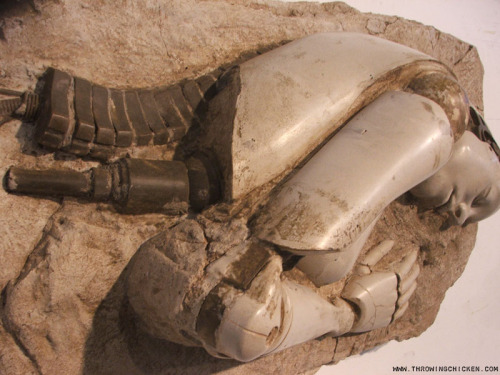
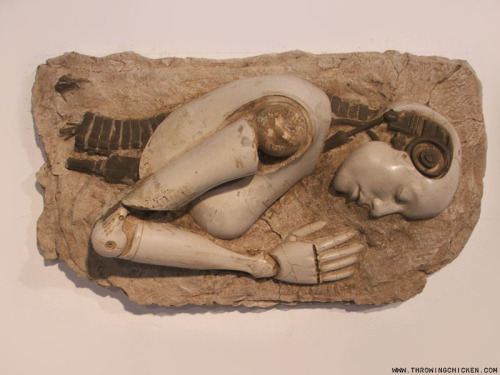
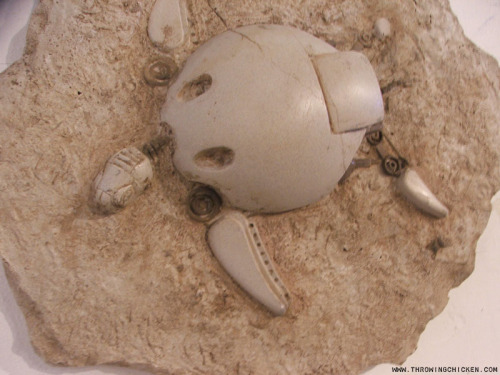
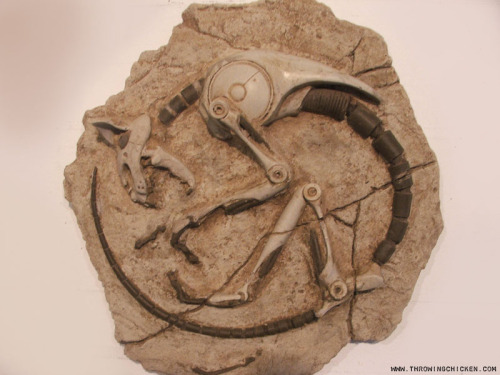
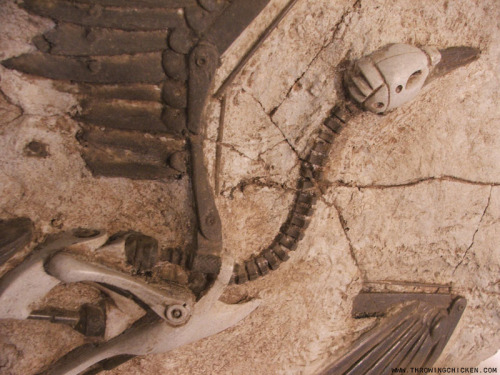
Creatures of the Mechazoic Era,
Chase Black
More Posts from Secretagentpeptidebond and Others

Lovely crystallization effect from an extraction the other day
If there was a sitcom based on my lab it would be a comedy of errors and near catastrophe featuring the Lab Weirdo™, the Confused Undergrad™, the Done With This Shit Fifth Year™, the Fourth Year Who Is The Only Person Who Knows How The Instruments Work But Is Impossible To Find™, the Ever Present Third Year™, and the Exhausted Second Year™
It would be called “Don’t Quench the Magnet”

Small changes add up to big results. You can activate the movement.
Tune into the livestream for the United State of Women Summit 6/14 here . GIF by Tumblr Creatr Thoka Maer

A Living Cage
The typical eukaryotic, which basically covers every cell found in animals, plants, fungi, slime molds, protozoa and algae, is a packed place, crammed with a nucleus (itself containing six feet of tightly wound DNA), mitochondria, centrosomes, peroxisomes, lysosomes, ribosomes, endoplasmic reticula (both smooth and rough), actin filaments, Golgi vesicles and more.
All of these cellular elements are in constant action, buzzing with communication and the movement of molecules. The image above, produced by Maria Voigt at the RCSB Protein Data Bank, depicts a clathrin cage, which is essentially a little basket for carrying and moving things around inside cells. Clathrin derives from the Latin clatratus, which means lattice.
Cells have a lot of them. They’re used to transfer nutrients, import signaling receptors, mediate an immune response after sampling the world outside the cell and the clean-up of cellular debris. When not in use, the cages are broken up, to be reassembled when next needed.
The cage above is roughly 50 nanometers wide, a size almost too small to imagine. By comparison, there are 25.4 million nanometers in an inch. A sheet of paper is roughly 100,000 nanometers thick. A single strand of human DNA is 2.5 nanometers in diameter.
The image is one of this year’s winners of the Wellcome Image Awards.
Stupid Lab Mistakes: a Constant Across All Levels of Experience
So today was day one of a tyrosinase lab. We had to centrifuge our organic matter sample (homogenized mushroom gills) to separate the soluble proteins from the rest of the tissue, and we counterbalanced our sample with an identical centrifuge tube of equal weight filled with water. We did all of this under the supervision of a TA and our professor.
My lab partners and I have used centrifuges many times before, but what we (and the instructors) failed to notice was that these particular tubes required an adapter for this particular centrifuge. We were spinning it up to about 7000 rcf when we heard a muffled “bang,” then the centrifuge slowed to a stop. When we opened it up, we discovered that the water tube had EXPLODED, shattering into a hundred little plastic pieces. the tube containing our organic sample slurry was thankfully intact, but it was badly warped and cracked. We spent the next 20 minutes or so carefully wiping water off every nook and cranny of the centrifuge interior, thanking our lucky stars that it wasn’t mushroom gloop.
I keep thinking that gaining more practical lab experience will save me from this kind of thing, but if the three different generations of chemists present couldn’t keep it from happening then there is no hope. These incidents are the things that add unexpected excitement to my life, though, so I suppose it’s not all bad.
I just knew that my inherent mistrust of AI would save me someday




This robot led people to their doom — and they still followed it
Researchers from Georgia Tech, backed by money from the Air Force, ran a test to see if people trying to escape from a high-rise building would trust a robot to lead them. Overwhelmingly, the sheeple followed the little droid to their simulated deaths. In the video, the researchers theorize why people obliged.
Follow @the-future-now
In this video, mixtures of inks (likely printer toners) and fluids move and swirl. Magnetic fields contort the ferrofluidic ink and make it dance, while less viscous fluids spread into their surroundings via finger-like protuberances. (Video credit and submission: Antoine Delach)
-
 ladyofthelands liked this · 2 months ago
ladyofthelands liked this · 2 months ago -
 threalnexus liked this · 3 months ago
threalnexus liked this · 3 months ago -
 blue-jacket-blues reblogged this · 3 months ago
blue-jacket-blues reblogged this · 3 months ago -
 herehaveafandom reblogged this · 3 months ago
herehaveafandom reblogged this · 3 months ago -
 sweet-tweeties liked this · 4 months ago
sweet-tweeties liked this · 4 months ago -
 roseflower-hunter reblogged this · 4 months ago
roseflower-hunter reblogged this · 4 months ago -
 rowanhorserider liked this · 4 months ago
rowanhorserider liked this · 4 months ago -
 noveltyfun reblogged this · 4 months ago
noveltyfun reblogged this · 4 months ago -
 eternalcyclicality reblogged this · 4 months ago
eternalcyclicality reblogged this · 4 months ago -
 b-1-t-3-m-3 liked this · 6 months ago
b-1-t-3-m-3 liked this · 6 months ago -
 bringmethepeculiar liked this · 6 months ago
bringmethepeculiar liked this · 6 months ago -
 bakarilennox reblogged this · 7 months ago
bakarilennox reblogged this · 7 months ago -
 bakarilennox liked this · 7 months ago
bakarilennox liked this · 7 months ago -
 madhatterhelsing reblogged this · 7 months ago
madhatterhelsing reblogged this · 7 months ago -
 fearthegayfrogs liked this · 10 months ago
fearthegayfrogs liked this · 10 months ago -
 cadythone reblogged this · 10 months ago
cadythone reblogged this · 10 months ago -
 kenithaa liked this · 10 months ago
kenithaa liked this · 10 months ago -
 mynonsenseistingling liked this · 10 months ago
mynonsenseistingling liked this · 10 months ago -
 juliusmonkee reblogged this · 10 months ago
juliusmonkee reblogged this · 10 months ago -
 sedona-arts liked this · 10 months ago
sedona-arts liked this · 10 months ago -
 cadythone liked this · 10 months ago
cadythone liked this · 10 months ago -
 kiri-komori reblogged this · 10 months ago
kiri-komori reblogged this · 10 months ago -
 lesbiannemesis liked this · 10 months ago
lesbiannemesis liked this · 10 months ago -
 blackfamlust2 liked this · 10 months ago
blackfamlust2 liked this · 10 months ago -
 cryingonthefreeway liked this · 10 months ago
cryingonthefreeway liked this · 10 months ago -
 mew777 liked this · 10 months ago
mew777 liked this · 10 months ago -
 sadkidneys liked this · 10 months ago
sadkidneys liked this · 10 months ago -
 marchenshark reblogged this · 10 months ago
marchenshark reblogged this · 10 months ago -
 dangerouslydrifting reblogged this · 10 months ago
dangerouslydrifting reblogged this · 10 months ago -
 tokyopandaclub reblogged this · 10 months ago
tokyopandaclub reblogged this · 10 months ago -
 tokyopandaclub liked this · 10 months ago
tokyopandaclub liked this · 10 months ago -
 postav54 reblogged this · 10 months ago
postav54 reblogged this · 10 months ago -
 nefarious-nebula reblogged this · 10 months ago
nefarious-nebula reblogged this · 10 months ago -
 kawaiidesu reblogged this · 10 months ago
kawaiidesu reblogged this · 10 months ago -
 kawaiidesu liked this · 10 months ago
kawaiidesu liked this · 10 months ago -
 rosehen96 liked this · 1 year ago
rosehen96 liked this · 1 year ago -
 hawk-rose reblogged this · 1 year ago
hawk-rose reblogged this · 1 year ago -
 mythspirationart liked this · 1 year ago
mythspirationart liked this · 1 year ago -
 seasonedoddish reblogged this · 1 year ago
seasonedoddish reblogged this · 1 year ago -
 seasonedoddish liked this · 1 year ago
seasonedoddish liked this · 1 year ago -
 computerr reblogged this · 1 year ago
computerr reblogged this · 1 year ago -
 computerr liked this · 1 year ago
computerr liked this · 1 year ago -
 garygoldenbignaturals reblogged this · 1 year ago
garygoldenbignaturals reblogged this · 1 year ago -
 fondlymorning reblogged this · 1 year ago
fondlymorning reblogged this · 1 year ago -
 five-am reblogged this · 1 year ago
five-am reblogged this · 1 year ago -
 five-am liked this · 1 year ago
five-am liked this · 1 year ago





